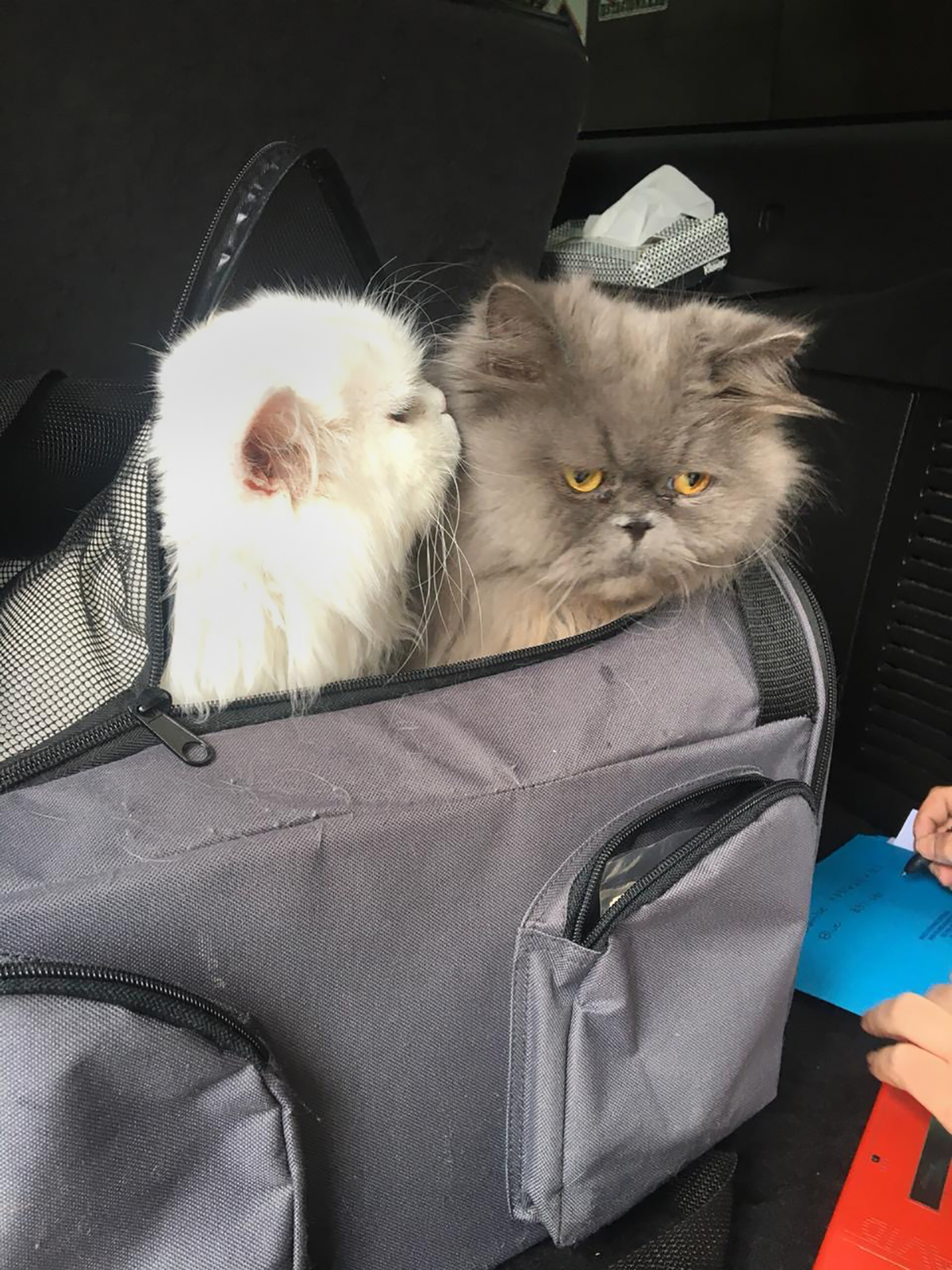Nightmare scenarios as travelers attempt to fly with pets amid coronavirus
Passengers with pets are left stranded due to pandemic airline cancellations.
What started as a complicated international move for Elizabeth Johns, an Australian hairstylist who has lived in Mexico for the past 10 years, has become a $40,000 nightmare as she tries to navigate the COVID-19 pandemic with her pets -- four Persian cats and one dog.
Last July, Johns began planning to move back home to Australia with her pets because Mexico had become too dangerous a place to live, she said.
Australian customs won’t allow animals to be imported directly from Mexico, so in early February, Johns drove north to San Diego, her cats meowing the entire trip in the back seat. She planned on staying in California for two months while getting the tests and vaccinations for her pets to comply with Australian regulations.
As fears of the pandemic spread, the window for Johns to leave the U.S. tightened. Five days before she was scheduled to fly from Los Angeles to Melbourne, Qantas canceled her flight and she was stranded in San Diego.
“I feel like a nomad,” Johns said. “I’ve got nowhere to go, I’m just kind of stuck in the middle of nowhere in a country that’s not mine.”

Traveling internationally with pets is hard under normal circumstances. Many countries have vaccine requirements for animals and it's common for nations to require animals to be quarantined before entry to make sure they are disease-free.
The biggest challenge for pet owners is that airlines limit the amount of space for animals -- whether that’s in the cargo hold or the cabin. Many airlines have temperature requirements for animals in the cargo, so depending on the weather, the pet will not be allowed to fly.
“On a given Tuesday, [traveling with pets] could be a pretty difficult situation outside of any other shutdowns that may occur,” according to Katie Hartman, a travel adviser based in Edmond, Oklahoma.
Johns’ move was even more problematic because of her Persian cats. “The cats with the squishy faces,” she said.
Snub-nosed animals, which include Persian cats and dogs like pugs and bulldogs, have trouble breathing because of their shortened nasal passages and elongated soft palates. Airlines must ensure that they have proper respiratory conditions during the flights. Hartman says that because of this, the animals are a higher risk and the airlines see them as a liability. Many carriers have banned snub-nosed animals entirely.
Because of the pandemic, airlines have tightened their pet regulations, with some of the larger carriers suspending all international pet travel, only allowing pets in the cabin as carry-ons or not allowing animals on flights with connections. As a result, owners around the world have found themselves in tough situations.
Sally Smith, owner of Airborne Animals, says that she shipped a bird on April 6 from New York to London. That was the first animal she’s moved in six weeks.
Lisa Durnford, an elementary school teacher from Thunder Bay, Ontario, was scheduled to receive her new black lab puppy from Warsaw, Poland, in mid-April. The flight was canceled due to the pandemic. Later that month, flights opened up between Warsaw and Chicago, so Durnford flew the puppy, named Rush, into Chicago on April 29. She and her husband took a flight from Thunder Bay to Toronto, and then from Toronto to Chicago. Once they picked Rush up from the airport, they drove him across the border and 10 hours back home to Thunder Bay. Durnford and her husband are now self-isolating for 14 days.
“What should’ve been a normal, direct flight to Toronto … turned into all this,” Durnford said.

To fly Rush directly to Toronto would have been about $1,200. With the added price of airline tickets, a rental car, and the duty of importing the dog, Durnford estimates she paid about $3,000.
Hartman recommends that travelers flying with a pet plan early and preferably use a travel adviser. If a change must be made in the reservation, passengers can’t just hop on the next flight -- they have to find the next flight that will allow their animal.

Despite all her planning, Johns has spent $40,000 on her travel and living expenses.
“I’ve spent so much money on this, it’s just ridiculous, and it never seems to end. It’s kind of a breaking point,” Johns said.
Johns’ travel agency, Pet Express, is searching for a way to get her home, looking at options like transporting the animals on the empty leg of a private jet or on a 747 cargo plane. According to Scott Williams, the owner of Pet Express, the cargo planes have been flying nonstop in order to keep worldwide supply chains open. They’re only stopping long enough to refuel.
“The sheer shortage of aircraft in the skies at the moment is making pet transport near impossible,” said Williams.
If Johns manages to get to Melbourne, her pets would have to quarantine for 10 days, and she herself would have to quarantine for 14 days, before driving the eight hours to her home outside of Adelaide.
That’s just wishful thinking at this point.
“I don’t know what the future is going to be with me and my animals,” said Johns. “If we don’t get home, I may need to put them up for adoption because I won’t be able to afford to stay here … I really don’t want to be separated from them.”
For now, Johns is still in San Diego. She and her five pets are milling about her apartment, counting down the days and dollars until they can go home.



